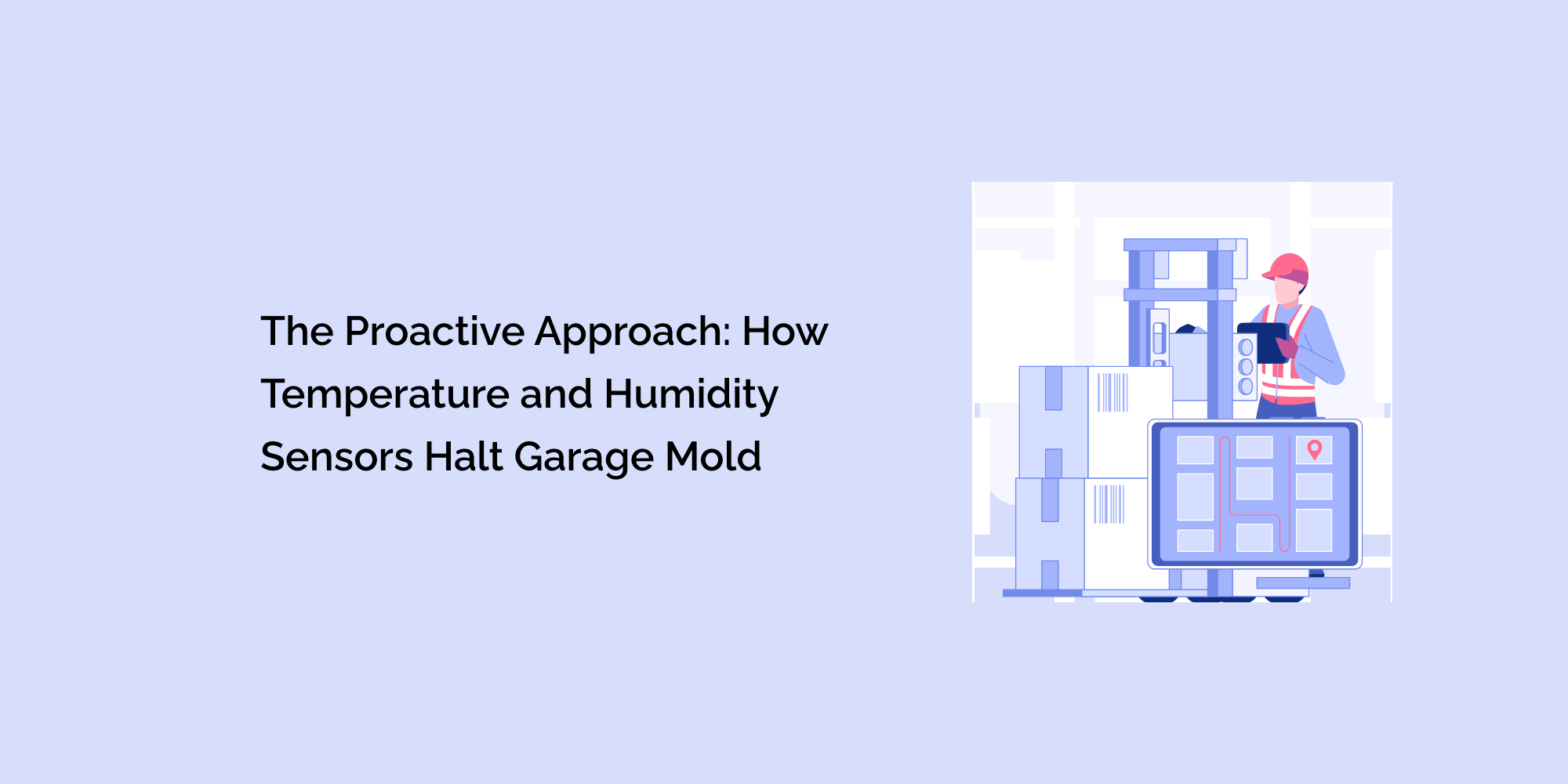Mold growth is a persistent and potentially harmful issue that homeowners often face, particularly in areas like garages that are susceptible to fluctuations in temperature and humidity.
Mold not only damages belongings but can also lead to health problems for residents. Fortunately, technology has stepped in with an effective solution: temperature and humidity sensors.
In this comprehensive blog, we'll delve deep into how these sensors play a critical role in preventing garage mold, offering a proactive strategy for maintaining optimal indoor conditions and promoting a mold-free environment.
Understanding the Menace of Garage Mold
Mold, a type of fungus, is naturally present in the environment. However, when it finds favorable conditions, it can proliferate and become a problem. Garages are particularly vulnerable due to inadequate ventilation, temperature variations, and potential water leaks.
Mold thrives in damp, humid environments, making garages a prime location for its growth. When humidity levels rise, mold spores find conducive surfaces and conditions to settle, germinate, and colonize, leading to various issues including structural damage, health concerns, and the deterioration of stored items.
The Essential Role of Temperature and Humidity Sensors
Temperature and humidity sensors serve as crucial tools in the battle against garage mold. These sensors actively monitor the environment, providing real-time data that enables informed decision-making to maintain the right conditions for preventing mold growth.
-
Continuous Monitoring and Alert System: Temperature and humidity sensors function as vigilant guardians of your garage's conditions. In the event of rising humidity levels, these sensors are programmed to trigger alerts. This early warning system empowers homeowners to take proactive measures before mold-friendly conditions set in.
-
Curbing High Humidity Levels: High humidity is a primary catalyst for mold growth. By consistently maintaining humidity levels below the threshold where mold can flourish (generally 60% relative humidity or lower), these sensors effectively prevent the initial conditions that pave the way for mold development.
-
Temperature Regulation: Temperature fluctuations can lead to condensation on surfaces, creating an environment that promotes mold growth. Temperature and humidity sensors work together to ensure that the temperature remains within an optimal range, minimizing condensation and inhibiting mold formation.
-
Data-Driven Insights and Analysis: Temperature and humidity sensors collect a wealth of data over time. Analyzing this data provides homeowners with valuable insights into patterns and trends, enabling the implementation of long-term strategies for mold prevention. This data-driven approach empowers homeowners to understand their garage's unique mold risk factors and take appropriate actions.
-
Automation and Remote Monitoring: Modern temperature and humidity sensors can seamlessly integrate with smart home systems, allowing homeowners to remotely monitor and control temperature and humidity levels. This level of control means that even when you're away from home, you can actively prevent mold growth by adjusting conditions accordingly.
Implementation and Multi-Faceted Benefits:
Incorporating temperature and humidity sensors into your garage management plan delivers an array of benefits:
-
Proactive Prevention: By staying ahead of mold-friendly conditions, you can proactively prevent mold growth before it becomes a major problem that requires extensive remediation.
-
Preservation of Belongings: Mold can wreak havoc on stored items such as clothing, furniture, and electronics. By using sensors to maintain optimal conditions, you're protecting your valuable possessions from mold-related damage.
-
Health and Indoor Air Quality: Mold growth can lead to poor indoor air quality, resulting in respiratory problems and allergies. Proactively preventing mold with sensors contributes to a healthier living environment for you and your family.
-
Financial Savings: Addressing significant mold infestations and resultant repairs can be financially burdensome. Utilizing temperature and humidity sensors helps you avoid these expenses while protecting your property.
Conclusion
The proactive approach to mold prevention through temperature and humidity sensors is a game-changer for homeowners, particularly those grappling with garage mold issues. These sensors offer real-time monitoring, alert systems, and data-driven insights that empower homeowners to take control of their indoor environment.
By proactively maintaining optimal temperature and humidity levels, you're safeguarding your belongings, fostering a healthier living space, and saving money on potential mold-related expenses.
Embrace the potential of technology and adopt these innovative solutions to ensure your garage remains mold-free and conducive to a safe and comfortable lifestyle.








